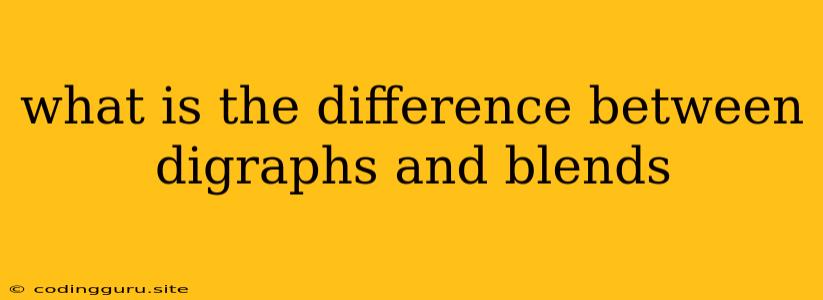What's the Difference Between Digraphs and Blends?
When learning to read and write, you'll encounter terms like "digraphs" and "blends." These terms might seem confusing at first, but understanding their differences is crucial for mastering phonics.
So, what exactly are digraphs and blends?
Digraphs are two letters that work together to represent a single sound. For example, the letters "sh" in the word "ship" represent the "sh" sound. Other examples of digraphs include "th", "ch", "wh", "ck", and "ph".
Blends, on the other hand, are two or more consonants that are blended together, where each consonant sound is still heard. Think of the word "blend" itself! The letters "bl" in the word "black" create a "bl" blend, where you hear both the "b" and "l" sounds. Other common blends include "tr", "dr", "fl", "fr", and "gr".
How can you tell the difference?
Here's a simple trick:
- Digraphs create a new sound, like "sh", "ch", or "th". You won't hear the individual letter sounds within the digraph.
- Blends combine two or more sounds, and you can still hear each individual consonant sound.
Here are some examples to illustrate the difference:
| Word | Digraph/Blend | Sound |
|---|---|---|
| ship | sh digraph | /ʃɪp/ |
| chair | ch digraph | /tʃeər/ |
| that | th digraph | /ðæt/ |
| black | bl blend | /blæk/ |
| train | tr blend | /treɪn/ |
| frog | fr blend | /frɒɡ/ |
Why is it important to know the difference?
Understanding the difference between digraphs and blends helps you decode words more effectively. By recognizing these patterns, you can read words more fluently and accurately.
Here are some tips for practicing digraphs and blends:
- Use flashcards: Create flashcards with different digraphs and blends. Practice reading the words and saying the sounds aloud.
- Play games: There are many fun games you can play to practice digraphs and blends, such as "Digraph Bingo" or "Blend Matching."
- Read aloud: Reading aloud helps you hear the sounds of digraphs and blends and reinforces the patterns.
- Write sentences: Write sentences using words with digraphs and blends. This will help you apply your knowledge in a practical way.
Conclusion:
Digraphs and blends are both important elements of phonics. By understanding the differences between them, you can improve your reading and spelling skills. Remember, digraphs create a new sound, while blends combine individual consonant sounds. With practice and a little effort, you can master these concepts and become a more confident reader!
